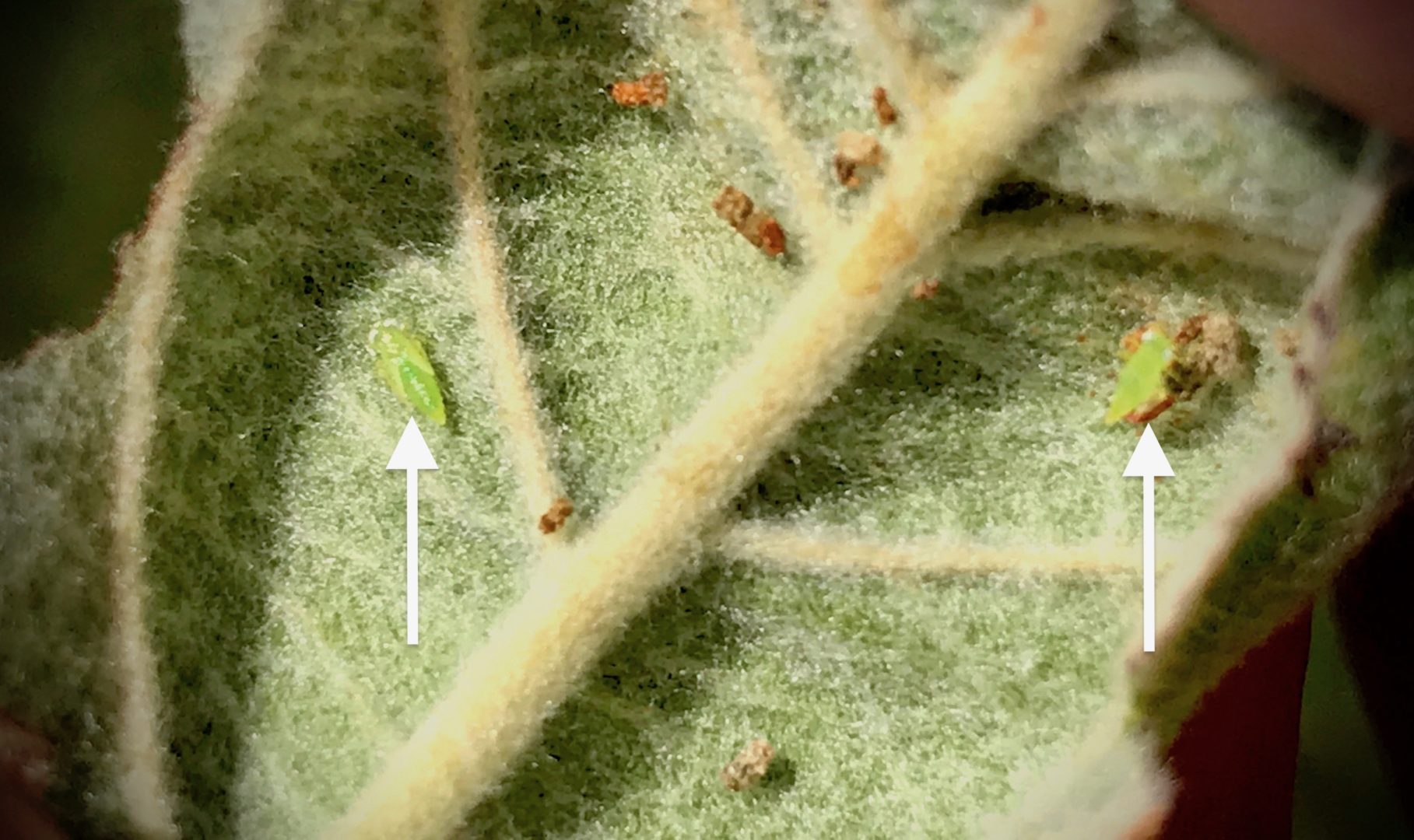Recently, our Plant Health Care Division has been seeing curled and distorted terminal leaves on apple trees and other ornamentals. We have identified potato leafhopper (PLH) nymphs as the causal agent. The damage they create is called hopper burn and occurs as they feed on leaves with their piercing/sucking mouthparts. Leafhopper  management on woody plants is usually not warranted, however we seem to be experiencing a widespread population boom this year. Treatments performed after terminal leaf damage has occurred will help knock back local populations and help stop further feeding.
management on woody plants is usually not warranted, however we seem to be experiencing a widespread population boom this year. Treatments performed after terminal leaf damage has occurred will help knock back local populations and help stop further feeding.
This year’s severe hopper burn symptoms were likely intensified by the first heat wave we experienced in later June, just as the newest flush of tender leaves were emerging. Most years our scheduled sprays during June will keep this pest in check, but when conditions are favorable for leafhoppers, there can be more noticeable damage.
PLH can create sudden invasions due to their rapid movement from cut hay or other larger-scale agricultural plants into ornamental landscapes. The good news is that hopper burn does not affect the long-term health of most woody plants, nor does it have a large impact on fruit quality.
Definitions
Terminal leaves
Outermost leaves on the tips of branches.
Woody plants
Perennial plants whose stems and larger roots are reinforced with wood produced from secondary xylem.


